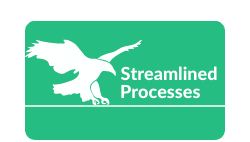For Streamline Marketing Automation, see our main page here.
Why Businesses Need to Streamline Marketing Automation
As businesses grow, managing multiple marketing tasks manually becomes overwhelming. Marketing automation simplifies repetitive processes like email campaigns, social media posts, and customer follow-ups, saving time and increasing efficiency. Companies that streamline marketing automation experience better lead nurturing, improved customer engagement, and increased revenue.
For example, e-commerce brands use automation to send personalized recommendations based on browsing history. SaaS companies automate onboarding sequences, ensuring users receive timely guidance. In both cases, automation enhances customer journeys while reducing manual effort.
Key Benefits
By optimizing marketing automation, businesses can achieve a seamless workflow. Here are some key benefits:
- Time Savings: Automation reduces manual data entry, allowing teams to focus on strategy and creativity.
- Improved Lead Nurturing: Automated email sequences keep leads engaged, increasing conversion rates.
- Consistent Messaging: Standardized communication maintains brand voice across multiple channels.
- Better Analytics: Data-driven insights help optimize marketing efforts for better performance.
- Higher ROI: Efficiency leads to lower costs and maximized returns on marketing investments.
How to Streamline Marketing Automation Effectively
To optimize workflows, businesses must integrate the right strategies and tools. Consider these practical steps:
Evaluate Marketing Needs
Assess current processes and identify bottlenecks. Are email marketing workflows too complex? Are leads dropping off before conversion? Understanding these challenges helps tailor automation improvements.
Select the Right Tools To Streamline Marketing Automation
Different platforms cater to various needs. Some popular choices include:
- HubSpot: Ideal for inbound marketing and lead nurturing.
- Marketo: Perfect for enterprises that require deep personalization.
- Mailchimp: Best for small businesses and email marketing.
- Hootsuite: Automates social media scheduling and engagement.
Integrate Automation with CRM
A connected CRM system ensures seamless data flow between marketing and sales teams. When customer interactions and campaign performances sync in real-time, businesses can make informed decisions quickly.
Segment Audiences for Personalization
Personalized automation improves engagement. By segmenting audiences based on behaviors, demographics, or past interactions, campaigns become more relevant. For instance, a clothing brand can send product recommendations based on previous purchases.
Analyze and Optimize Campaigns
Regular analysis prevents stagnant workflows. Metrics such as open rates, CTRs, and conversion rates indicate which automations perform best. A/B testing helps refine sequences to yield better results.
Challenges in Achieving Results When You Streamline Marketing Automation
Despite its advantages, marketing automation poses challenges. Some common issues include:
- Poor Data Quality: Inaccurate or incomplete data affects campaign performance.
- Lack of Personalization: Generic messages fail to engage customers effectively.
- Over-Automation: Excessive automation can feel robotic, making interactions impersonal.
- Integration Complexity: Connecting multiple platforms requires technical expertise.
To overcome these challenges, businesses should regularly audit data, test personalization strategies, balance automation with human touchpoints, and ensure seamless tool integration.
Real-World Example of Marketing Automation Success
A travel agency improved customer engagement by refining their automation strategy. Previously, their emails had low open rates. By segmenting users based on past bookings and preferences, they personalized content and automated follow-ups. As a result, email open rates increased by 45%, and bookings rose by 30% within six months.
Best Practices for Maximizing | Streamline Marketing Automation
To get the most out of automation, follow these best practices:
- Keep Messages Human: Avoid robotic language; personalize interactions to maintain authenticity.
- Test and Optimize: Regular A/B testing improves campaign performance.
- Maintain Data Hygiene: Clean databases prevent inaccuracies and improve targeting.
- Enhance Customer Journeys: Automation should guide users through seamless, engaging experiences.
Frequently Asked Questions
Streamline Marketing Automation for improved lead nurture.
Marketing automation nurtures leads by sending targeted and timely emails, SMS, or push notifications based on customer behaviors. This keeps prospects engaged and moves them down the sales funnel efficiently.
Can small businesses benefit from marketing automation?
Absolutely. Small businesses save time and resources by automating routine tasks like social media posts, newsletters, and customer follow-ups. Even simple automations can enhance customer engagement and drive higher sales.
What’s the biggest mistake made when companies Streamline Marketing Automation?
One major mistake is over-automating communications to the point where interactions feel impersonal. Businesses must balance automation with human touchpoints to maintain authenticity.
How often should marketing automation workflows be reviewed?
Marketing workflows should be reviewed at least quarterly. However, businesses experiencing rapid changes in audience behavior or market trends may need to evaluate more frequently.
Final Thoughts For When You Streamline Marketing Automation
Marketing automation transforms efficiency and effectiveness when implemented strategically. By addressing challenges, using the right tools, and continuously optimizing campaigns, businesses can maintain seamless customer engagement while freeing up valuable resources. Companies that streamline marketing automation the right way gain a competitive advantage and maximize their results.
Follow us on Facebook here.

